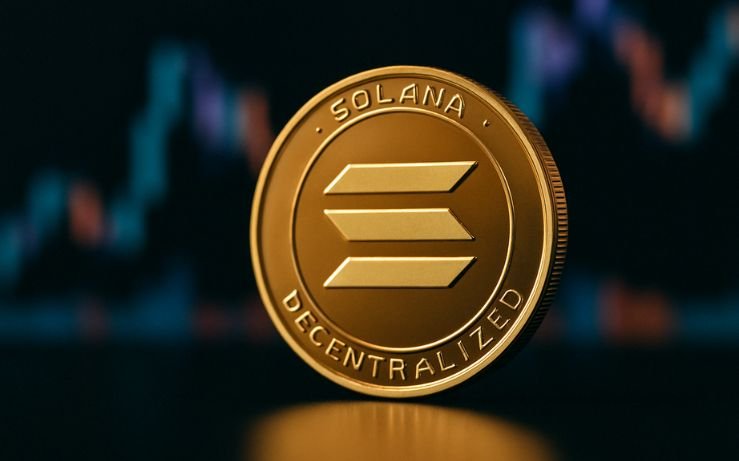Market Pulse
Today, October 28, 2025, marks a pivotal moment in the institutional adoption of digital assets with the commencement of trading for US-based Solana (SOL) staking Exchange-Traded Funds (ETFs). This development transcends mere spot exposure, introducing yield-generating mechanisms directly into regulated investment vehicles. While undeniably a significant stride towards mainstream crypto integration, this evolution demands a cautious and analytical lens, weighing the potential for increased capital inflow against the complex regulatory landscape and inherent risks associated with staked digital assets.
The Mechanics of Yield-Generating Crypto ETFs
Unlike traditional spot ETFs that simply hold an asset, Solana staking ETFs are designed to capitalize on the blockchain’s Proof-of-Stake (PoS) consensus mechanism. Investors in these funds gain exposure to SOL’s price movements while simultaneously benefiting from the staking rewards generated by locking up a portion of the underlying tokens. This structure allows institutional and retail investors, through regulated intermediaries, to participate in network validation and earn yield without the technical complexities, operational overhead, or direct custody risks associated with self-staking.
- Dual Exposure: Combines SOL price appreciation potential with staking yield generation.
- Managed Staking: Fund managers handle validator selection, delegation, and reward distribution.
- Accessibility: Simplifies institutional access to a yield-bearing crypto asset.
- Custodial Assurance: Relies on regulated custodians for secure asset management.
Potential Market Implications for Solana (SOL)
The introduction of US Solana staking ETFs is expected to have multifaceted impacts on the Solana ecosystem. On the demand side, these products could unlock substantial institutional capital, driving increased demand for SOL and potentially influencing its market valuation. By integrating staking rewards, the ETFs offer a compelling value proposition that could attract investors seeking both growth and income within the digital asset space. From a network perspective, increased staking activity via these funds could bolster Solana’s security and decentralization by committing more tokens to validation.
However, an analytical view also necessitates acknowledging potential drawbacks. The concentration of significant SOL holdings under a few large ETF providers might raise concerns about staking centralization, potentially giving these entities considerable influence over network governance. Furthermore, while the ETFs mitigate individual operational risks, the underlying asset (SOL) remains subject to significant market volatility, protocol-specific risks, and broader macroeconomic factors.
Read Also: XRP Holders: Brace for Impact, Expert Warns
A Precedent for Broader Altcoin Staking ETFs?
This launch inevitably raises questions about its broader implications for other Proof-of-Stake altcoins. The approval of a US Solana staking ETF could set a precedent, potentially paving the way for similar products for assets like Ethereum (post-Merge), Cardano, or Polkadot. However, the path forward is unlikely to be uniform or immediate. Each altcoin presents unique technical, economic, and most critically, regulatory characteristics.
The US Securities and Exchange Commission (SEC) maintains a rigorous stance on classifying digital assets, and the specifics of each network’s staking mechanism, decentralization, and underlying utility will be subject to intense scrutiny. While Solana’s strong performance, developer activity, and perceived robustness may have contributed to its pioneering status, other altcoins may face distinct hurdles in obtaining similar regulatory clearances for yield-generating investment products.
Navigating Regulatory Scrutiny and Investor Risks
Despite the approval, regulatory oversight for these innovative products is expected to remain stringent. Investors considering Solana staking ETFs must perform thorough due diligence. Key risks extend beyond general market volatility to include the potential for ‘slashing’ (penalties for validator misconduct, though managed by the fund), protocol vulnerabilities, and the inherent illiquidity associated with staked assets. Fund structures, fee schedules, and how staking rewards are reinvested or distributed will be critical factors influencing net investor returns.
Moreover, the nascent nature of these products means their long-term performance and regulatory treatment in various jurisdictions are still evolving. Investors must weigh the benefits of passive yield against these complex operational, market, and regulatory uncertainties, understanding that even regulated vehicles cannot eliminate all crypto-specific risks.
Conclusion
The debut of US Solana staking ETFs on October 28, 2025, represents a significant evolutionary step for institutional cryptocurrency investment, merging traditional finance’s accessibility with digital assets’ yield-generating capabilities. While it offers a powerful validation for the Solana network and potentially sets a benchmark for future altcoin investment products, the journey is far from over. Ongoing regulatory clarification, the careful management of associated risks, and the diligent evaluation of centralization concerns will define the long-term success and broader applicability of these innovative financial instruments. Investors are advised to maintain a cautious and analytical approach, recognizing the transformative potential alongside the inherent complexities of the digital asset landscape.
Pros (Bullish Points)
- Provides regulated institutional access to Solana (SOL) and its staking yield.
- Could significantly increase demand for SOL, potentially driving price appreciation.
- Validates the Proof-of-Stake model for institutional investors and broadens crypto's appeal.
Cons (Bearish Points)
- Potential for staking centralization if large ETF providers control significant SOL supply.
- Underlying asset (SOL) remains subject to high market volatility and protocol risks.
- Regulatory hurdles for other altcoin staking products may remain substantial despite this precedent.
Frequently Asked Questions
What are US Solana staking ETFs?
These are regulated investment funds that hold Solana (SOL) tokens and actively stake them on the Solana blockchain to earn yield, offering investors both price exposure and staking rewards through a traditional financial vehicle.
How might these ETFs impact the SOL price?
The launch could increase institutional demand for SOL, potentially leading to price appreciation, greater liquidity, and enhanced market validation for the Solana ecosystem.
Do these ETFs pave the way for other altcoin staking products?
While a significant precedent, the regulatory environment for other altcoins remains complex. Each asset will face unique scrutiny from regulators regarding its classification and staking mechanics.






